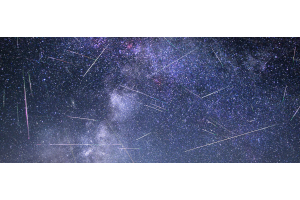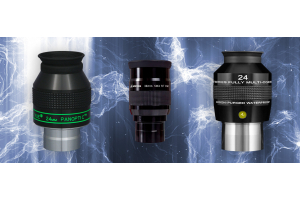
Image Credit: NASA, ESA, CSA, STScI, Chris Willott (National Research Council Canada), Lamiya Mowla (Wellesley College), Kartheik Iyer (Columbia University)
NASA's James Webb Space Telescope has identified and "weighed" a distant galaxy, nicknamed the Firefly Sparkle, that existed 600 million years after the Big Bang. Uniquely, this galaxy has a mass similar to what the Milky Way's mass might have been at a comparable stage of development. Unlike other early galaxies observed by Webb, which are typically much larger, Firefly Sparkle is a smaller, low-mass galaxy. The galaxy contains 10 distinct star clusters, each at a different stage of formation, providing an unprecedented glimpse into the process of early galaxy assembly. The galaxy's name comes from its appearance, resembling a swarm of sparkling fireflies.
The unique shape is due to what’s called gravitational lensing, where the light from the galaxy is magnified and distorted by the gravity of a massive foreground galaxy cluster, MACS J1423. This effect, combined with Webb's infrared imaging capabilities, allowed astronomers to resolve individual star clusters within the galaxy. By reconstructing its shape, astronomers found that Firefly Sparkle looks like an elongated raindrop, with two star clusters near the top and eight clustered toward the bottom. The colors observed in Webb's images reveal that star formation within these clusters occurred in staggered phases, not all at once. Firefly Sparkle also has two companion galaxies within close proximity, at distances of 6,500 and 42,000 light-years. This close relationship is expected to influence the evolution and growth of the main galaxy. As these galaxies interact, gravitational forces cause gas to condense, promoting star formation in clumps and gradually increasing the galaxy’s mass. This interaction-driven growth process aligns with long-standing theories about how galaxies in the early universe formed through mergers and interactions with smaller galaxies. The observations helped astronomers find that the galaxy is roughly the same mass as the Milky Way 600 million years after the Big Bang. This suggests that galaxies of considerable mass were forming very early on in the universe’s existence.
The discovery was made possible through data from the Canadian NIRISS Unbiased Cluster Survey (CANUCS), which combines Webb's NIRCam and NIRSpec instruments. The survey builds on previous work from the Hubble Space Telescope's CLASH program, targeting the same galaxy cluster. The research highlights the unique ability of Webb to provide a clear view of the earliest galaxies in the universe, revealing the step-by-step process of their formation and evolution. Firefly Sparkle offers a rare chance to observe a galaxy being built "brick by brick," offering vital clues about how galaxies like the Milky Way came to be.

Learn More
Interested in diving deeper into the world of astronomy? Check out our Astronomy Hub for a wealth of articles, guides, local resources for planetariums and observatories near you, and more to enhance your stargazing experience.







